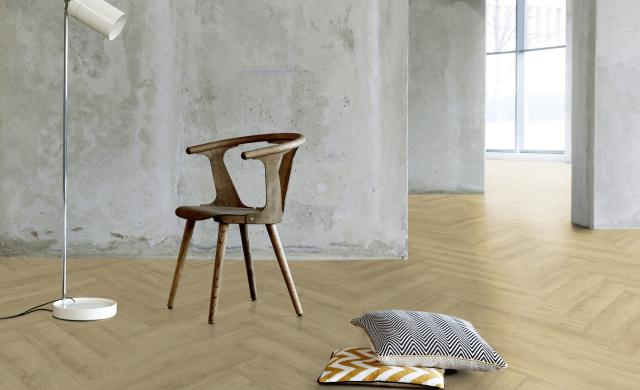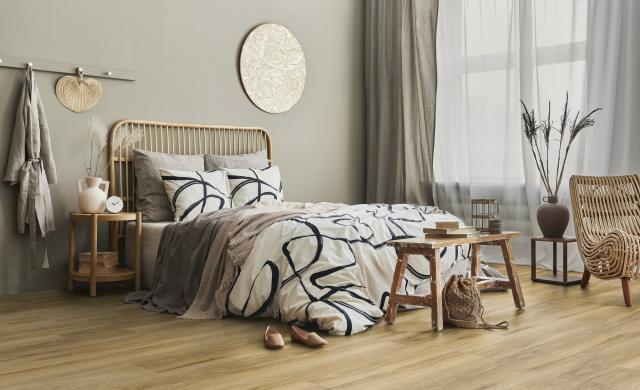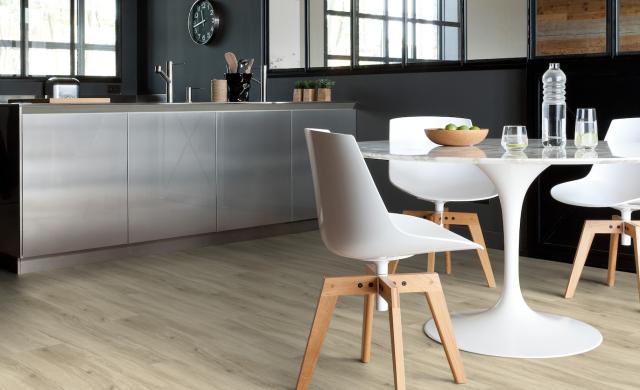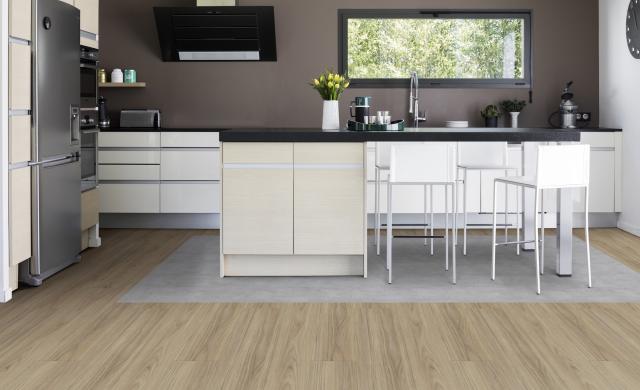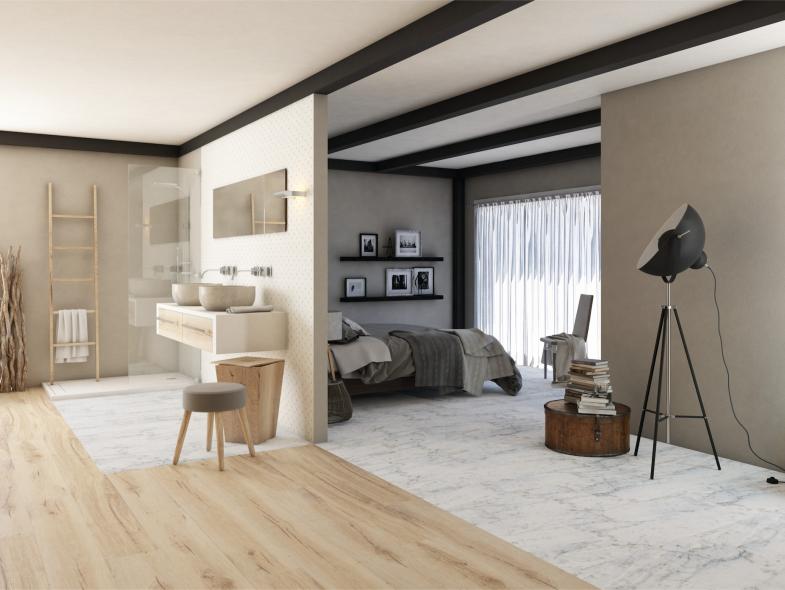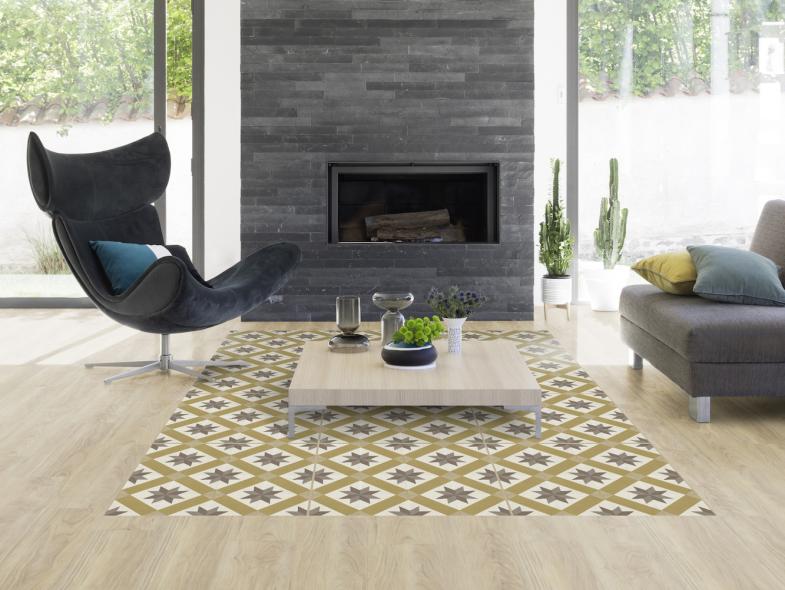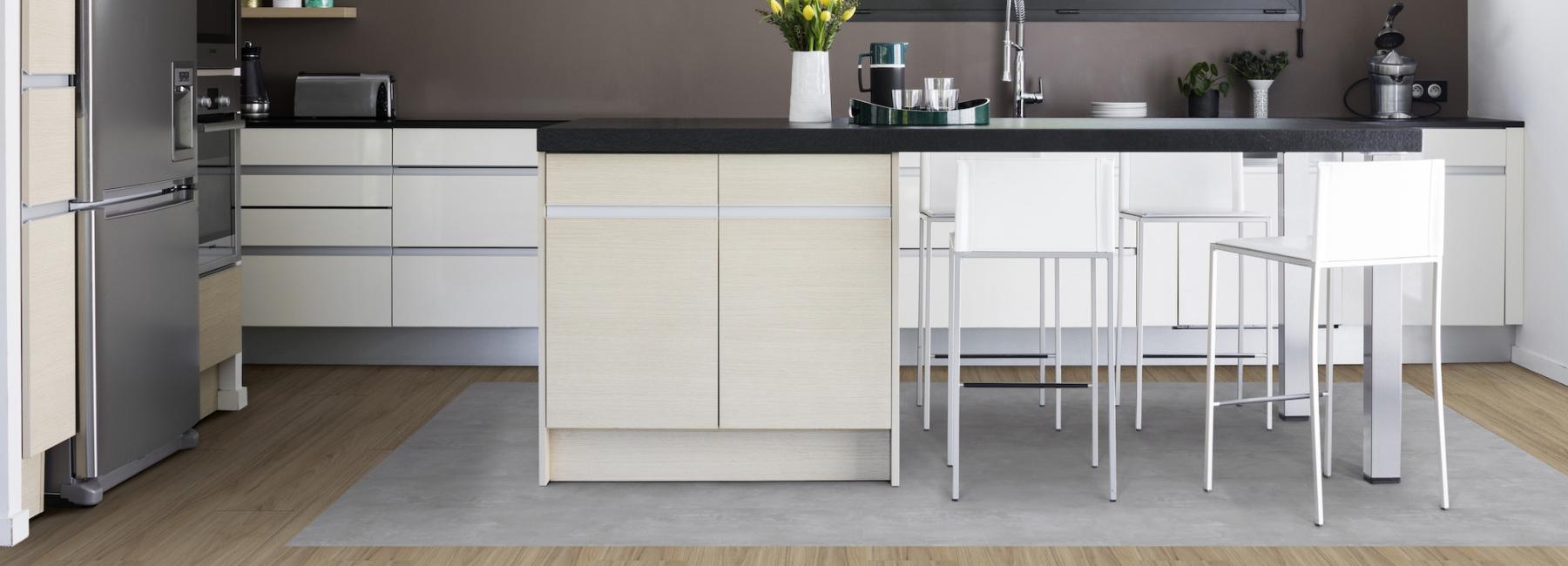
OUR TIPS FOR COMBINING TILES AND WOOD FLOORS
Perhaps you're asking yourself how you can combine tiles and wood floors in one or more rooms in your home? This article is for you!
Associating wood flooring and tiles in the same room is particularly popular at the moment. It's a great way of combining the warm and cozy feeling of a wood floor with the freshness of tiles, for a beautiful finish. However, using both tiles and wood requires careful consideration and, for the combination to really work, there are a few simple principles that must be followed.
Why combine tiles and wood floors?
Today's big trend in interior decoration is all about contrast and opening up.
This is a move away from the traditional continuity of flooring and involves a daring association of two types of flooring with different characteristics, like tiles and wood.
This audacious combination can help you easily mark out a specific space within a room or indicate a clear separation between two areas in the same room. It can also provide a sense of separation without the need for walls or simply draw attention to a particular decorative feature. In any case, this type of association is perfect for obtaining a unique, modern look.
Combining tiles and wood floors
Combining tiles and wood flooring can help you delineate your home, separating your kitchen from your living area, for example, or highlighting an entrance that opens onto another room. This association can also draw attention to a specific element within a room.
For example, if your bathroom has wood flooring, fitting tiles underneath the bath will elegantly accentuate its presence. Blue and cream tiles combined with light oak floorboards are particularly attractive!
Managing the transition between different types of flooring
To successfully combine hardwood flooring with tiles, you have several options. The first is the traditional option, which consists of simply respecting threshold bar that separates the rooms in your home.
For a more modern and elaborate finish, you can also opt for a transition where the tiles gradually and randomly encroach upon the hardwood flooring. In terms of colors and patterns, the possibilities are endless. For example, colored tiles with honey-colored wood, or ebony with black tiles for a monochrome effect... The possibilities are endless!
Consider imitations
While combining wood flooring with tiles is undoubtedly very elegant, these options are rather expensive and are not necessarily accessible to all budgets. They also have technical characteristics that should not be forgotten: for example, fitting wood floors in a bathroom is not recommended, as wood can be vulnerable to humidity.
The ideal alternative, therefore, is to opt for flexible flooring with PVC or vinyl tiles. Extremely versatile and affordably priced, this type of floor is available in an infinite range of patterns and mimics many materials perfectly. You can, therefore, go for a clip-lock PVC or vinyl tile in imitation wood to reproduce the combination of wood and tiling down to the smallest details. As well as providing a highly realistic finish, it will free you from the many inconveniences associated with the upkeep of wood and tiles.
Furthermore, installing imitation wood in clip-lock vinyl or PVC tiles is particularly easy. Unlike traditional hardwood flooring, it can be fitted in only a few hours, even by those who aren't DIY experts!
A unique, harmonious combination
For combining tiles with wood flooring there are no strict rules, everything depends on your personal decoration style!
Just bear in mind that if you choose a dark color of vinyl imitation wood, it is better to opt for lighter shades for your tiles, and vice versa. This basic technique will prevent you from ending up with finish that is too bland!
